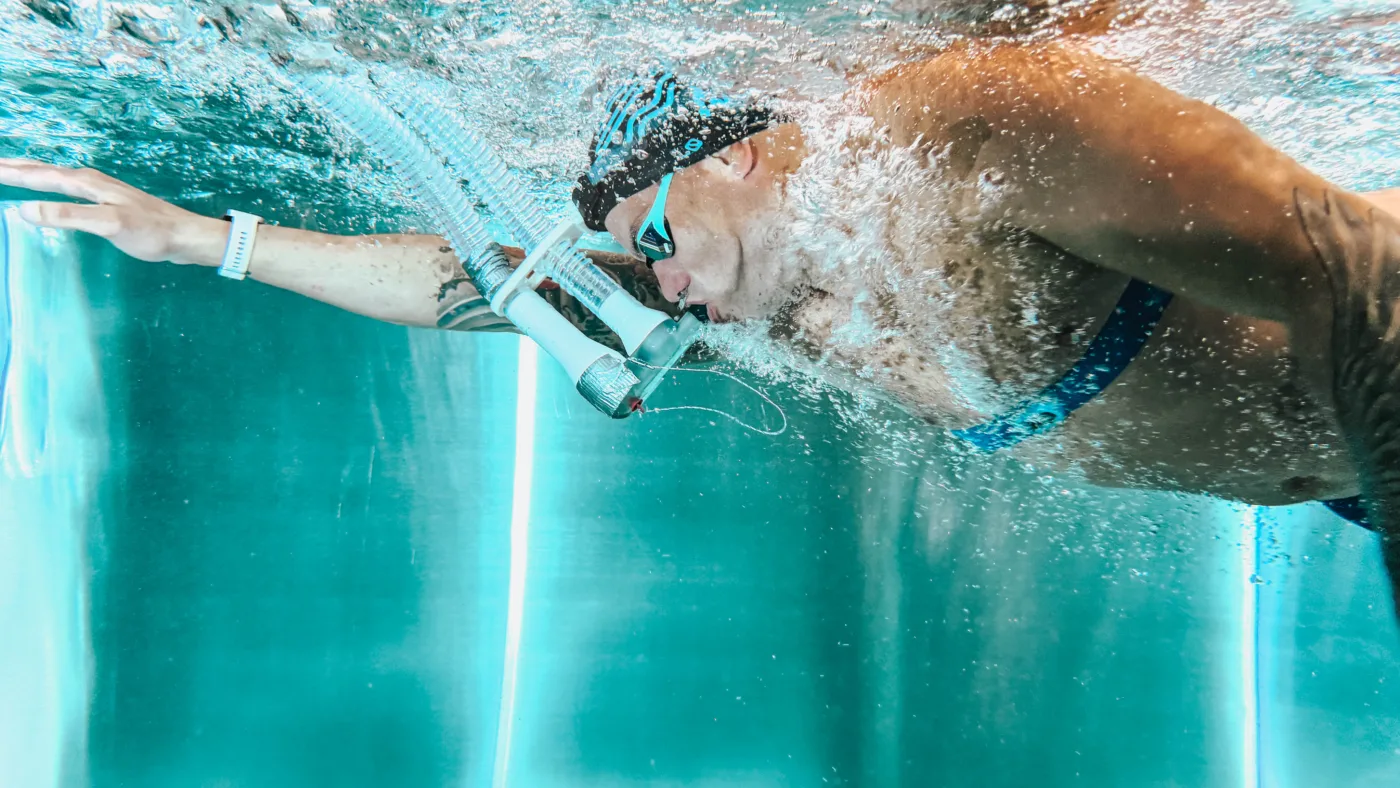As an invited journalist, I had the honor of visiting Huawei's laboratory in Helsinki, where they test their latest wearable devices. Although I was expecting some basic presentations, I was completely blown away by the experience. Let's start at the beginning...
With the new Huawei Health Lab in Helsinki, Huawei has taken a big step forward in the world of wearable devices. After problems with restrictions in other areas, they turned their attention to wearable devices, where they are among the leaders in terms of sales figures. Some recent models like Huawei Watch GT 4, Huawei Watch Fit 3 and Huawei Band 7 are extremely popular among Android phone users as well as iPhone users. They are opening a new segment where practically everything will be measured. And Huawei wants to be the world leader here.
Research Center in Helsinki: A paradise for sports and technology lovers
With the new laboratory in Helsinki, Huawei has taken a big step forward in the world of wearable devices. After problems with restrictions in other areas, they turned their attention to wearable devices, where they are among the leaders in terms of sales figures. These devices are not just smart accessories, but personal trainers, health companions and technological marvels all in one.
@janmacarol 🏊♂️ Skiing in the lab? Running on a futuristic treadmill? Only in Helsinki, where I tested Huawei's new gadgets. 🎿🏃♂️ #HuaweiSlovenia #WearableTech #FutureOfFitness #TechFun #LabAdventures #journalism #journalism # test #smarttexx #ai #HuaweiHealthLab #SmartWearable
Thus, Huawei is betting on sensors, which are key to the future of wearable devices. In order to achieve the best results, they collaborate with scientists from various universities and associations, where they standardize this type of data. Their research is not only academic in nature; include real users and athletes to ensure the highest accuracy and usability. Research is conducted on top-of-the-line equipment in over 20 different sports, including new and popular forms of exercise such as swimming, cycling, cross-country skiing and, of course, running.

Tour experience: From swimming to running
Visiting the laboratory was like an adrenaline adventure. We started by swimming in a counter-current pool, where real swimming conditions are simulated. Cycling was next where we tested several different scenarios. We then got down to carpet skiing – trust me, this was no ordinary fitness day! Of course, there was also a mandatory run at a distance of 1 kilometer.
Swimming in a counter-current pool
One of the most impressive parts of the laboratory is the counter-current pool, which enables the simulation of real swimming conditions. The pool has dynamic water jets that can create a flow of up to 350 m3/h, which corresponds to a swimming speed of 1'15 min/100m. This creates an "endless" pool where the swimmer does not have to turn or stop, allowing for an accurate assessment of swimming ability.
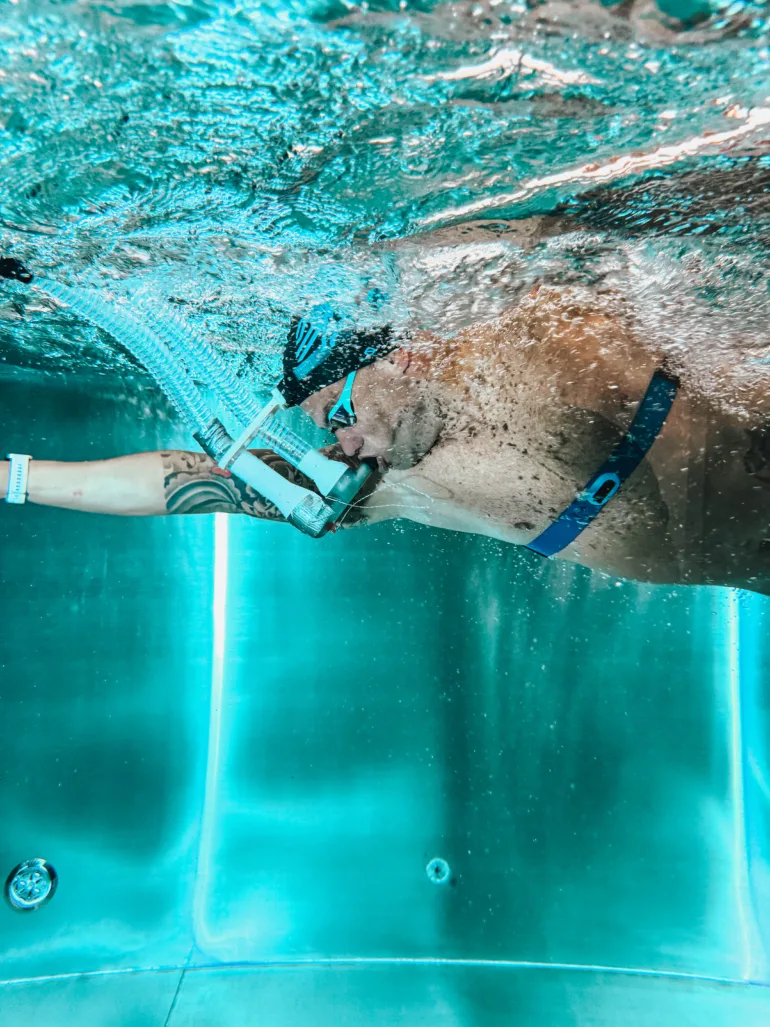
Skiing on the simulator
The ski simulator is another top-notch device that enables the simulation of various skiing conditions. Adjustable speed, slope and interactive tracks allow precise monitoring of the user's skiing techniques. During simulator operation, sensors detect speed, position, cutting angles, forces and performance data, providing accurate and reliable data to develop algorithms and improve skiing techniques.
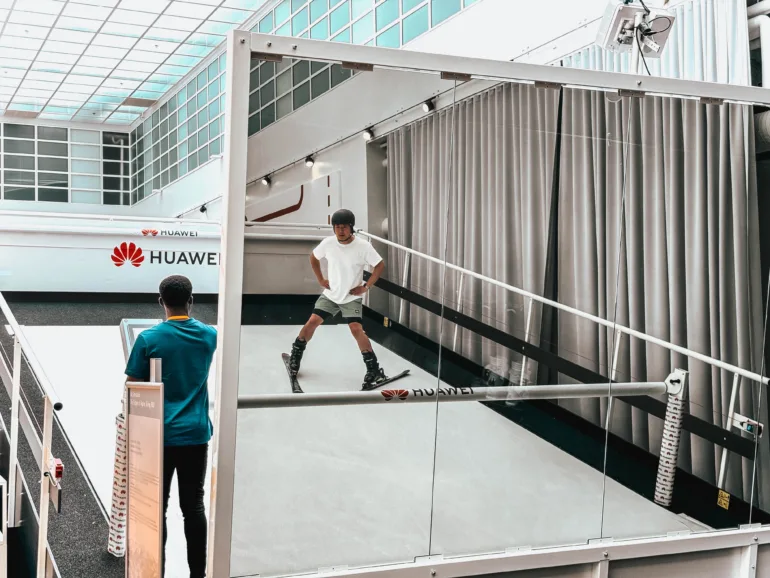
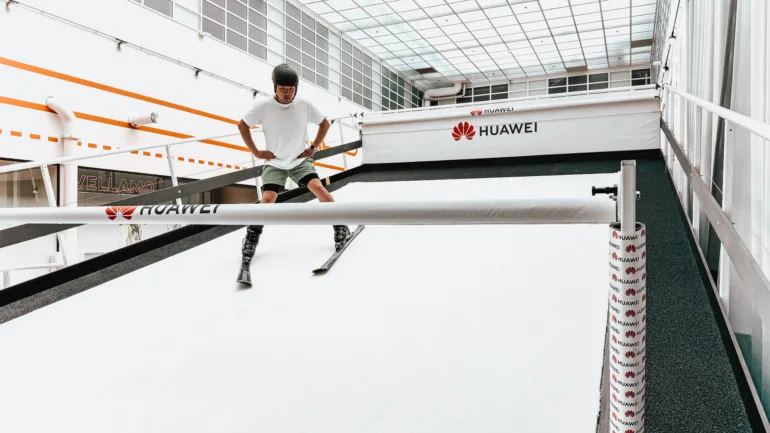
Skiing on the simulator was like real snow skiing, or skiing on a 2 cm carpet. For skiing, it is an extremely "different" layout, but it gives scientists a good insight into what is happening to the skier. Even the simplest movements were analyzed and displayed on the screen. As I descended the virtual track, sensors tracked my every move, from the position of my feet to the balance of my body. In the end, I got a detailed analysis of my skiing technique, along with suggestions for improvement.
Treadmills for analysis of running technique
Running was a special experience, as we tested our skills on an instrumented treadmill that measures everything from heart rate to pressure on the soles of our feet. After the run, we were able to see a three-dimensional image of our running stride, which revealed all the hidden mistakes.

The laboratory has two different treadmills – a multipurpose treadmill for general assessment of running technique and an instrumented treadmill for detailed analysis of a runner's technique and stride. The multi-purpose running track is designed for a variety of sports including skateboarding, cycling and wheelchair cycling. It boasts advanced features such as automatic heart rate monitoring and a built-in camera to monitor track speeds up to 50 km/h, and provides real-time feedback through intelligent recognition of camera images.
I felt like a pro when I ran on the track. Every step was closely monitored, and at the end I received a detailed report on my running technique. Seeing my movement in 3D was amazing as I could see exactly where I was making mistakes and how I could correct them. Huawi concluded that I am not an Olympian, but that I am still fast enough.
So: "If you want to know how to run like a cheetah, ride a bike like a pro and swim like a dolphin, then this is the place for you!" And it's true. The tour of the laboratory was incredibly interesting and full of surprises. We laughed, sweated, and learned about how technology can improve our athletic abilities.
Huawei and the future of sports
With its research centers around the world, including Helsinki, Xi'an and Songshan Lakes, Huawei is targeting the future of sports and health technologies. Their latest wearable devices, such as the Huawei Watch GT 4, bring precise health and fitness monitoring algorithms that are the result of years of research and collaboration with top experts.
10 years of research and development of smart wearable technology
Huawei has been deeply committed to the field of smart wearable devices for a decade. Relying on the capabilities of its research and development centers around the world, which now number more than 10, Huawei has built a sports and health scientific research system and established three main sports and health science laboratories: in Xi'an and Songshan Lakes in China and in Helsinki, Finland.
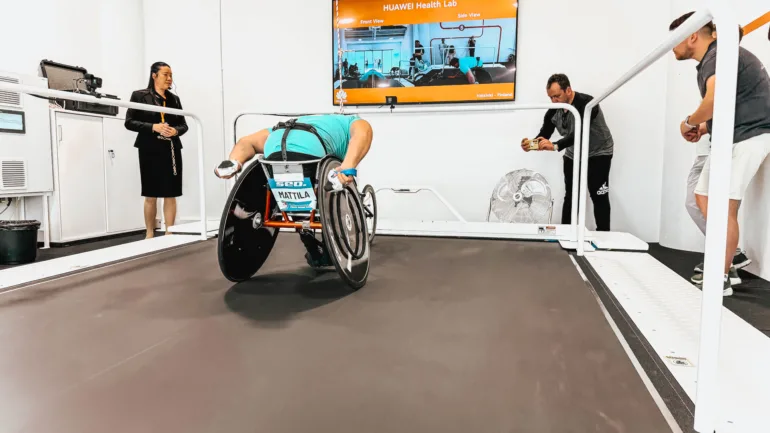
Four major global health and fitness research missions at Huawei
Huawei Health Labs will serve as open research platforms that contribute to technology research, discovery and verification, development standards, and industry incubation. In addition, Huawei has used these centers to promote industry incubation to create a global technology innovation platform for the sports and health industry as a whole. A newly built health science laboratory in Finland will focus on the next chapter of sports and health technology through research and testing.
Integrating the most advanced resources into the global sports and health field
Huawei Health Lab is investing its top resources in the sports and health field around the world to explore more innovative features and create a richer and more diverse wearable experience. In addition, Huawei is working with top experts and organizations to build an integrated sports and health ecosystem with plans to incubate new cutting-edge technologies.
TruSport™: Demystifying Sports Physiology
TruSport™ was first created at the Helsinki Research Institute in Finland. The scientific sports management system reveals seven major sports indicators such as peak oxygen uptake, calories, aerobic/anaerobic training pressure, training load, recovery time, performance prediction and real-time performance during human movement.
A research-backed training algorithm and running coach
TruSport™ can quantify users' running ability, record and analyze training data, provide personalized training tips and plans, and help users maintain a scientific sports and healthy lifestyle.
New sports modes
New sports modes have been added: Padel, eSports, football and basketball, which constantly enriches sports modes and introduces new sports trends.
Development of Huawei's own VO2 MAX detection method
Huawei has one of the most comprehensive proprietary health and fitness tracking algorithms in the world and is also the first in China to achieve such a feat.
VO2 MAX as a key indicator in the assessment of cardiorespiratory endurance
Huawei's research institute in Finland has invested millions of dollars to form a professional research and development team in cooperation with European universities and institutions. This improves the data accuracy of algorithms on smart wearable devices against the quality of professional equipment. Using the Huawei Watch series of devices to evaluate human cardiorespiratory performance (maximum O2 intake), Huawei's wearable technology can scientifically evaluate sports performance and even more accurately evaluate human sports ability to improve exercise safety.
Huawei Health Lab collaborates with leading academic institutions to achieve new industry standards
Partnership with Interlive
Huawei co-founded the Interlive consortium with six European universities, including the University of Lisbon, the University of Southern Denmark, University College Dublin, the University of Granada, the German Sports University of Cologne and the Norwegian School of Sports Sciences. The consortium aims to develop best practices for consumer wearables to measure direct and derived metrics. The partnership has further strengthened the reliability of Huawei's wearable technology and will ensure further scientific validity of Huawei's wearable devices based on four standards: heart rate, number of steps, calories burned and VO2 Max (Maximum Oxygen Intake).
Participation in one of the most ambitious research initiatives in the field of cardiovascular health in Europe
Since 2019, Huawei has published heart health research results at the ESC conference and was included in the ESC 2020 atrial fibrillation diagnosis and treatment guidelines. In 2021, Huawei collaborated with Professor Gregory Lip from the University of Liverpool in the UK to conduct a three-year applied research on patients with a high risk of atrial fibrillation. This helps realize Huawei's vision of a harmonious health ecosystem such as cardiovascular health, which brings greater access to more scientific and proactive risk detection and early prevention of strokes and other cardiovascular diseases.
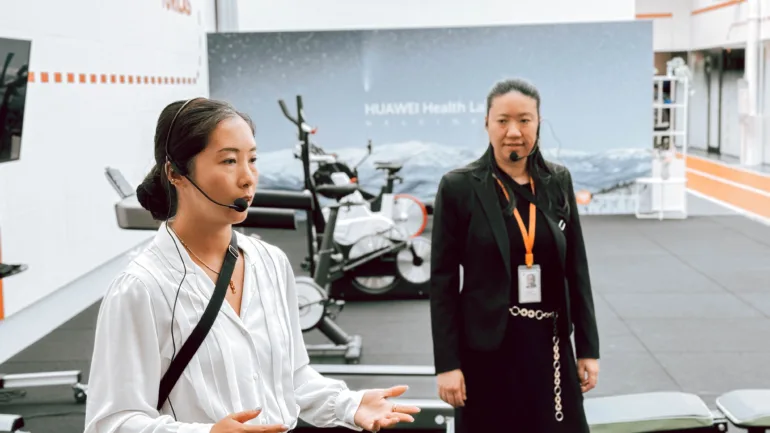
Research on the use of HUAWEI wearable devices in the management of patients after stroke
Huawei's wearable devices will be used to detect atrial fibrillation phenomena in stroke patients. These devices will then be used for an in-depth study of the impact of atrial fibrillation and early warning management, sleep apnea and exercise conditions such as step count on stroke risk. Huawei is also the only wearable device manufacturer participating in the iCARE4CVD project, one of the most ambitious research projects in the field of artificial intelligence and cardiovascular diseases in Europe.
Data security and privacy
Huawei is committed to protecting user privacy and security. The company complies with all global privacy laws and regulations, including GDPR, and has developed strict privacy and security principles. They only work with partners who meet strict privacy and security standards, giving users peace of mind.
Huawei and the future of wearable devices
Huawei Health Lab Helsinki represents a new step into the future of wearable devices. Through their advanced research and collaborations with leading academic institutions and experts, they strive to improve the accuracy and performance of their products. Their latest wearables, such as the Huawei Watch GT 3, bring precise health and fitness monitoring algorithms that are the result of years of research and collaboration with top experts.
Huawei is also the only wearable device manufacturer participating in the iCARE4CVD project, one of the most ambitious research projects in the field of artificial intelligence and cardiovascular diseases in Europe.
Conclusion
Although Huawei faces challenges, their focus on innovation in wearables makes them an industry leader. Their efforts in Helsinki are proof that the future of sports technology is being written here and now. If you want to feel like a superhero in your sporting endeavors, Huawei's wearables are the right choice for you.
Let technology take you to new heights—or at least to your next error-free running workout.



